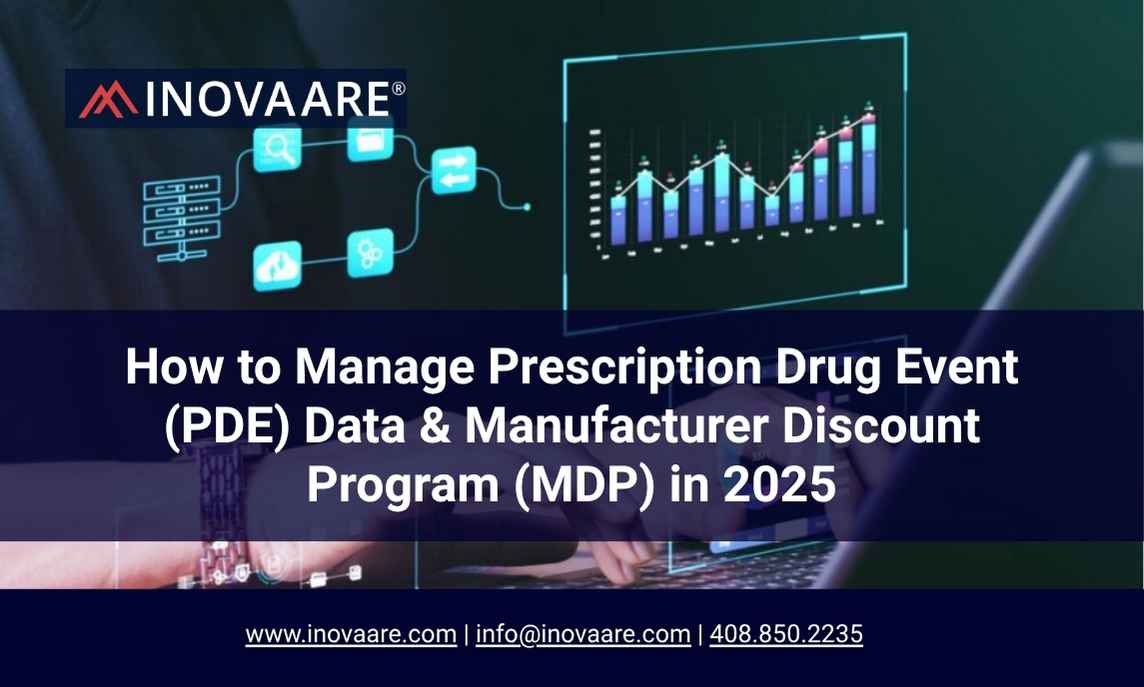Two major provisions of the Inflation Reduction Act (IRA) that take effect in 2025 will require refresher training, even for those who have been managing Prescription Drug Event (PDE) data and the Coverage Gap Discount Program (CGDP) in previous years. The Centers for Medicare & Medicaid Services (CMS) has issued guidance and reminders since 2023 on the new PDE file layout, a list of new Drug Data Processing System (DDPS) edits, and the processing of the Manufacturer Discount Program (MDP).
Understanding the Prescription Drug Event (PDE) Submission Process
When drug plans submit PDE data to CMS, the Prescription Drug Front End System (PDFS) performs format, integrity, and validity checks on file and batch-level records on a limited scale. Once the file passes PDFS edits, the DDPS edits the detail-level records for format, integrity, and validity before storing the data for future payment calculations.
PDE data serves as the foundation for Part D payments, both prospectively and during reconciliation. It is worth plan sponsors’ time and resource investments to ensure their systems produce correct data for PDE submissions and establish processes to resolve errors in a timely manner. If a PDE is not rejected after these steps, DDPS proceeds to edit the Manufacturer Discount Program (MDP) data in the PDE.
Key Edits and Validation in the PDE Process
After verifying enrollment, eligibility parameters, and duplicate checks, DDPS begins logic edits by comparing different PDE fields against each other. For example:
- If the drug coverage status is “E” for enhanced or “O” for an over-the-counter product, the Covered Plan Paid Amount (CPP) must be zero.
- The sum of detail cost fields must equal the sum of the payment fields, except for allowable rounding errors.
GDCB and GDCA Calculation Formula:
GDCB and GDCA = Ingredient Cost Paid + Dispensing Fee Paid +
Total Amount Attributed to Sales Tax + Vaccine Administration Fee
or Additional Dispensing Fee
Manufacturer Discount Program (MDP) in the Prescription Drug Event (PDE) Process
CMS uses the following factors to calculate the expected Manufacturer Discount amount:
- Total Gross Covered Drug Cost (TGCDC) and True Out-of-Pocket (TrOOP) Accumulators
- Beginning and Ending Benefit Phases reported on the PDE
- Plan Benefit Design
- When the Reported Manufacturer Discount amount varies from the calculated Manufacturer Discount amount, DDPS issues several informational edits and reject edits.
Manufacturer Discount Amount Calculation
The Manufacturer Discount amount is based on:
- Benefit Phase:
- 10% of the applicable drug cost in the initial coverage phase
- 20% of the applicable drug cost in the catastrophic phase
- If a claim is a straddle claim (e.g., high-cost drug >$2,000.00), the discount applies only to the portion of the negotiated price that falls above the deductible.
- Plan Benefit Design:
- For non-defined standard (DS) plans, the PDE payment fields are mapped to the DS plan.
- Out-of-Pocket Accumulated Amounts
The table below shows the financial allocations including the Manufacturer Discount in the context of the reporting PDE for a non-defined standard plan
| Date of service 01/02/2025 | |
|---|---|
| Plan benefit design | |
| Plan-specific cost share in ICP | 20% |
| Plan-specific deductible | $250.00 |
| TrOOP Accumulator | $ – |
| DS deductible | $590.00 |
| PDE Field Value | |
| Drug Coverage Status Code | |
| Ingredient Cost Paid | $7,500.00 |
| Dispensing Fee Paid | $ – |
| Total Amount Attributed to Sales Tax | $ – |
| Vaccine Administration Fee or Additional Dispensing Fee | |
| Gross Covered Drug Cost Below Out-of-Pocket Threshold (GDCB) | $6,230.00 |
| Gross Covered Drug Cost Above Out-of-Pocket Threshold (GDCA) | $1,270.00 |
| Patient Pay Amount | $1.496.00 |
| Other TrOOP Amount | $ – |
| Low Income Cost Sharing Subsidy Amount (LICS) | $ – |
| Patient Liability Reduction Due to Other Paver Amount (PLRO) | $ – |
| Covered D Plan Paid Amount (CPP) | $4,682.00 |
| Non Covered Plan Paid Amount (NPP) | $504.00 |
| Reported Manufacturer Discount | $818.00 |
| Total Gross Covered Drug Cost Accumulator | $ – |
| True Out-of-Pocket Accumulator | $ – |
| Beginning Benefit Phase | D |
| Ending Benefit Phase | C |
Common DDPS Edit Categories and Resolutions
Various DDPS edit categories require different resolutions:
- Enrollment and Low-Income Subsidy (LIS) Eligibility Errors (Reject Codes 700-753) – require resolution by the plan sponsor.
- Data Discrepancies, Cost Allocation, Drug-Related Errors, Adjustments/Deletions (Reject Codes 600, 700, 800 series, 961-986) – need correction by the Pharmacy Benefit Manager (PBM)
- Manufacturer Discount Program (MDP) Issues (Reject Codes 931-940) – fall under the PBM’s responsibility.. If the rejection relates to phase-in discounts for LIS members, plan sponsors must validate LIS eligibility in their internal systems.
Managing PDE and MDP Efficiently with Inovaare
Managing and tracking PDE data along with MDP is a full-time task, even for professionals with expertise in pharmaceutical data, financial analysis, and compliance.
Inovaare offers specialized tools and expert resources to help plan sponsors scrub their PDE reporting and investigate rejected PDE root causes. By using Inovaare’s technology, drug plans can focus on cost-effective drug utilization management, ensuring compliance and financial optimization.
If you have questions about managing PDE data in the era of Part D re-design or need insights into the PDE reporting process, call us at 408.850.2235.
